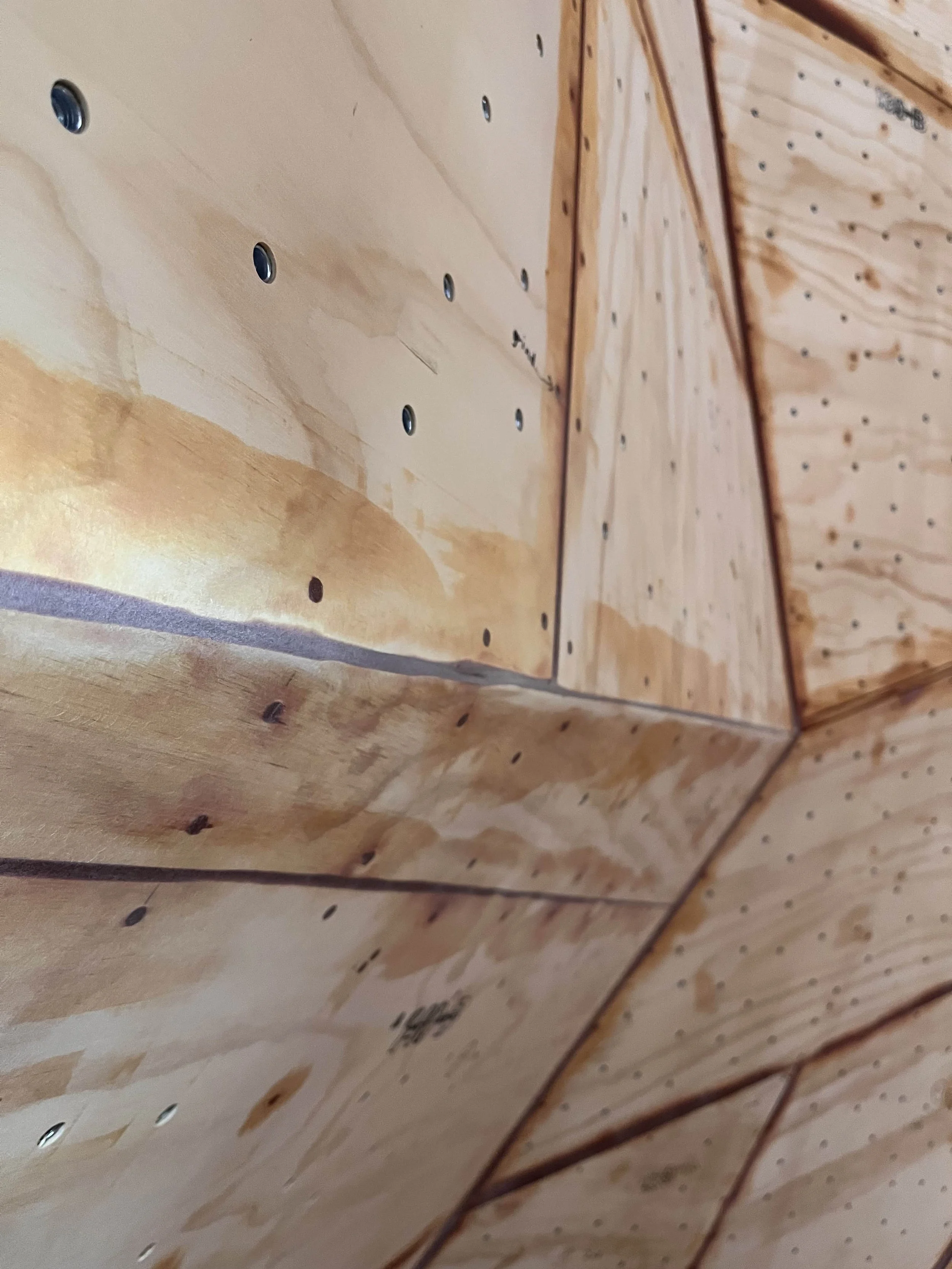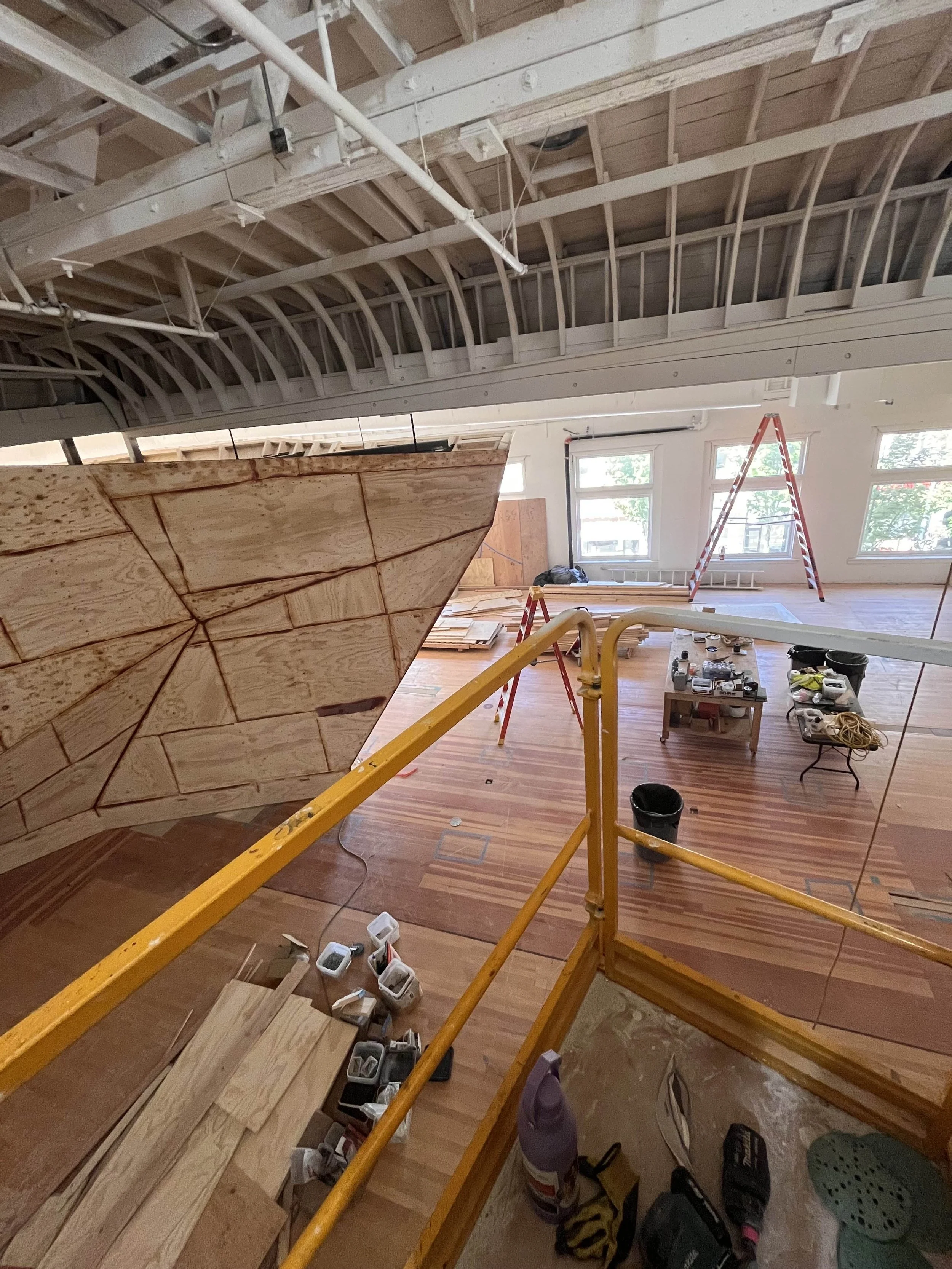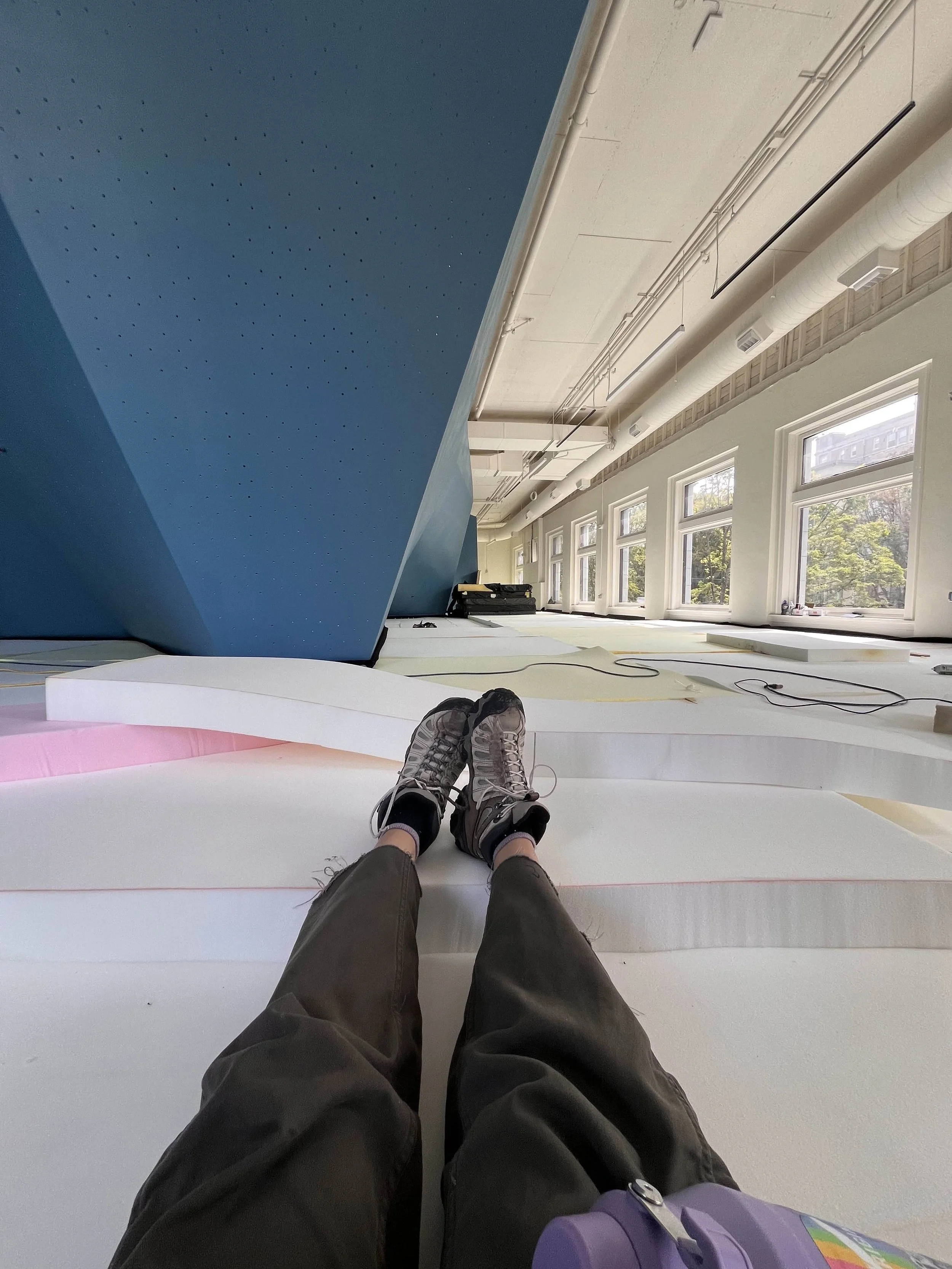Bouldering Project Construction
The Project
Bouldering Project (BP) is a climbing gym chain that was founded in Seattle in 2011. Since then, the company has expanded to operating 14 gyms in 9 cities across the United States. Around January 2024, BP began construction of a new location in what used to be a bank near the University of Washington in Seattle, Washington.
My Contribution
I worked with 3 others as an epoxy technician, prepping the wood panels to be affixed to the supporting steel beams and then filling the seams between the panels with epoxy putty. My work was highly detail-oriented, as the goal was to smooth out the seams where the wood panels met to create flawless climbing walls. BP is uniquely known for having realistic walls that simulate the outdoors, so my team's work was critical to the completion of this iconic element of the gym. We started with an initial coat of the putty, and once it had cured 24 hours after application, we would sand down the excess. We would then apply a second, finer coat, to fill smaller gaps, and then re-sand as a final touch. A few walls even got third or fourth coats as needed. We covered more than 6,500 square feet of climbing walls. Once the walls were completed, we also installed the landing foam to ensure that climbers could fall safely. This involved cutting the large sheets of foam to fit and then gluing them down securely.
What I Learned
This was my first time working on a construction site and I felt like a fish out of water, especially in comparison to the more formal engineering settings I had previously worked in. I quickly adapted to the unforgiving blue collar work, and I learned to step in whenever I could help other contractors on site while still staying on top of my work. I also gained a higher proficiency in using power tools, including palm sanders, impact drivers, and foam saws. I even got to use a scissor lift, which was very exciting for me! Though I wasn't working as an engineer, I grew to understand a lot of struggles that technicians have with engineers as my team had to deal with the ramifications of engineering choices that we had no control over. This improved my engineering as it led me to further consider the work required to execute my ideas, even when I might not be directly responsible for that work. This experience also deepened my appreciation for every day engineering, particularly the HVAC and structural engineering that goes into buildings, an area of engineering I previously hadn't had much interest in.

Seams before and after a first coat of epoxy putty

Sanding the second coat on seams at sharp edges

Working on scaffolding, partway through the epoxy process

Cutting, laying, and gluing 3 layers of foam

Cleaning the spray gun used for gluing the top layer of foam down